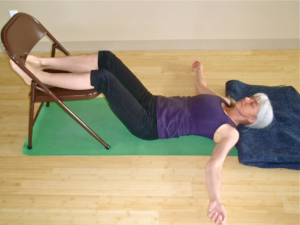
Take Time to Restore When You’re Not Well
Creating Safe Space: Should You Teach Yoga When You’re Sick?
Last winter dealt me a double whammy. After three years free from all manner of maladies, the sore throat/sinus/fever malaise caught me in early December. Then in the wee hours one January morning, the nasty norovirus took hold. The most violent symptoms abated after about 24 hours, but I felt the effects for four or five days. I hear that norovirus is making the rounds again this season. I’m knocking on wood …
(FYI: Norovirus is the leading cause of temporary gastroenteritis in the U.S. There’s actually no such thing as “stomach flu.” If you have a miserable stomach bug, unless your bug can be directly traced to tainted food, it’s probably norovirus.)
By far the most stressful part of being ill—besides the misery of the illness itself—was making sure my yoga classes were covered. I’ve always been a “trooper:” If I can stand up, I can work. However, it’s different when your work is to teach yoga (or anything else). Soldiering on may not be in everyone’s best interests.
I’m fortunate to have a competent pool of subs—two of whom happened to be sick at the same time! I was able to cover my four regular classes, but I had to postpone a Restorative class that was part of a four-week series. It’s hard to teach a proper Restorative class without tending to people’s setups, a level of contact I didn’t feel would be safe given norovirus’s highly contagious nature.
When Is It Okay to Teach When You’re Not 100 Percent?
With many maladies, like sore throats and sinus infections, the most contagious period is early, often before symptoms surface. In those cases, you’re usually safe to teach when you feel strong enough to do so. Even so, sinus conditions are messy, and I avoid direct contact with students. I also avoid handling the props in the space where I teach, especially the eyebags. I use my own personal mat and bring my own blanket to sit on.
Inform Yourself
It’s important to be informed as to the nature of the illness you’re dealing with. If you aren’t seeing a doctor, call your local health department and describe your illness. They will likely be aware of the illness du jour in your area, and can give you a good idea as to when you are no longer contagious.
Once I felt halfway decent, I did some research on norovirus. It typically shows up suddenly, blasts its way through in a day or so. After the major onslaught, symptoms go away and you feel weak, but not too bad—comparatively speaking anyway.
After reading info online and talking to a rep from the health department, I found out that an infected person can be highly contagious two to three days after symptoms go away. That’s the insidious thing about norovirus. Most people assume that once they feel better, they’re no longer contagious. Lots of people end up with this nasty gombu because neither they nor their friends/family members realize they are still contagious even when they feel pretty good.
If I hadn’t done the research I might have gone ahead and taught classes once my major symptoms were gone. Knowing that I was still carrying norovirus cooties two days after the onslaught, I opted not to teach. I wouldn’t wish norovirus on anybody, and I certainly don’t want to be the virus-monger that brought it to a whole class!
How Not to Make Your Students Sick
Here are some guidelines for when to teach, when not to and how to keep students safe when you do:
- • Find out the nature of your illness, from your doctor or from the health department, so you know when you are contagious and when you are likely to be safe.
- • Don’t teach yoga if you think you might still be contagious. Just don’t.
- • If at all possible, don’t teach yoga until you feel strong enough to give your students your full attention and energy.
- • Keep your hands off publicly used props until you are fully recovered.
-
• Avoid adjusting, hugging or otherwise contacting students until you are fully recovered.
- • Take care of yourself! Give yourself plenty of time to recover. Do some Restorative practice. Dragging yourself through a class is no fun. Your students would rather see you healthy and vibrant.

Your post is a very wise public and yogic service, spreading not viruses but responsibility to all. Thank you, especially from those of us who will spared the nasty gombu because of the extra precautions teachers will take after reading your important article.